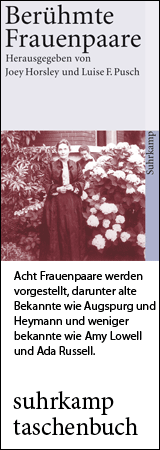
born on October 11, 1884 in New York, NY
died on November 7, 1962 in New York, NY
US-American politician; First Lady 1933-1945
140th birthday on October 11, 2024
Biography
International significance
Eleanor Roosevelt is known to only very few people in Germany. If you show people a picture of her, almost no one can identify her. The most recent publication by or about Eleanor Roosevelt in German dates from 1959. There is no biography of her available in German, not even in a translation.
In the United States, however, the wife of American President Franklin Delano Roosevelt – opponent of Stalin and Hitler – is regarded as the most important woman of the 20th century. Over half a century after her death, her memory is as vivid as ever: she is an inspiring role model for many American women, including Hillary Rodham Clinton. There are hundreds of biographies about her, typically bearing titles such as First Lady of the World (Winner, 2004) or First Lady of the Twentieth Century (Gottfried, 1997). The article on Eleanor Roosevelt in the English-language Wikipedia is 22 times as long as the one in the German Wikipedia.
What is the reason for this disparity? Perhaps it is because Germans were so preoccupied first with Hitler and then with the consequences of his dictatorship that they failed to take note of crucial world events and neglected to catch up on them after the war ended.
Who then was Eleanor Roosevelt? What made her so special? Why did Hillary look to her for inspiration?
It is no exaggeration to say that Eleanor Roosevelt was her husband's moral conscience before and during his four terms as president (an exclusive record). Since he was the most powerful man in the world, she was thus also the moral conscience of the world during a presidency that spanned the darkest of times with Hitler and Stalin installed in reigns of the terror.
Childhood, origins, relatives
Eleanor had an unhappy childhood: her mother rejected her eldest child because she considered her neither pretty nor graceful nor cheerful enough. Her father, on the other hand, loved his daughter dearly, and the emotionally starved girl idolized him in return. However, as Elliott Roosevelt was an alcoholic and consequently unreliable, he was unable to provide her with any real security.
Eleanor's parents died young; she was orphaned at the age of ten and grew up with her maternal grandmother. She received her first regular school education from 1899-1902 at the English boarding school Allenswood; she later described the three years there under the loving supervision of principal Marie Souvestre as the happiest time of her life.
In 1902, the 18-year-old was called back by her grandmother in order to make her debut. It was around this time that she met her future husband. His mother (who had a very strong lifelong influence on him) was against the union, and so the couple did not marry until 1905. Eleanor Roosevelt’s next ten years were marked by six consecutive pregnancies. Between 1906 and 1916, she gave birth to one daughter and five sons (the second son died in infancy).
Entry into politics
In 1918, Eleanor found out that Franklin was having an affair with her friend Lucy Mercer. Franklin had in the meantime made a successful political career; a divorce would have destroyed his chances of further political advancement. For the sake of politics and also for the sake of the children, Eleanor agreed to continue the marriage on an amiable basis as a partnership of convenience.
In 1920, after 70 years of struggle, American women were granted the right to vote. In 1921, Franklin contracted polio and as a result his legs were left permanently paralyzed. The fact that he was a “cripple” was hidden from the public – that would also have destroyed his political career – and thus it was Eleanor who “became his legs,” as she put it.
In the decade preceding Franklin's election as president, Eleanor was particularly involved in women's issues. With the introduction of women's suffrage, women had become highly relevant for male candidates, and so her own political interests coincided with Franklin's. In 1928, she became chairwoman of the Bureau of Women's Activities for the Democratic National Committee. In the same year, she met the journalist Lorena Hickok. The two became close, lifelong friends. Their intimate and tender correspondence certainly proves that they loved each other – whether they were lesbians in the modern sense remains disputed. What is certain is that Eleanor Roosevelt worked closely with and was friends with many lesbian couples.
First Lady
Eleanor's most effective period was naturally her time as First Lady. When the series of measures initiated by her husband and known as the New Deal began to be enacted into law by the Democratic majorities in Congress starting in 1933, she worked tirelessly to explain how the country was to be led out of the Great Depression with the help of the numerous government programs and projects. She reached out to the American public in a daily newspaper column entitled My Day, on the radio with her own program, and in the countless talks she gave in countless trips across the country. For the first time, there was a woman in the cabinet: Secretary of Labor Frances Perkins, a friend of Eleanor's. The First Lady held her own weekly press conferences for female journalists. She was particularly concerned about the rights of Blacks and she worked closely with the NAACP (National Association for the Advancement of Colored People).
At the end of 1941, the United States entered the Second World War. Once again, Eleanor Roosevelt fought especially for the rights of Blacks and women, and she also vigorously opposed the dismantling of welfare programs to finance the wartime expenditures. She lobbied the reluctant State Department to accept Jewish refugees from Nazi Germany and traveled tens of thousands of miles to support American troops around the world.
Elder stateswoman; fighter for the oppressed all over the world
On April 12, shortly before the deaths of Hitler and Mussolini and before the victory over Nazi Germany, Franklin D. Roosevelt died – in the presence of Lucy Mercer! Roosevelt's successor in office, Harry S. Truman, took advantage of Eleanor's reputation and experience and appointed her as a United States Delegate to the United Nations. The Universal Declaration of Human Rights, which was adopted by the General Assembly on December 10, 1948, was largely the work of Eleanor Roosevelt – from planning and formulation to pushing it through to ratification.
She continued to work until the end of her life – as a diplomat for world peace, for the newly formed state of Israel, for her friend Adlai Stevenson during his presidential campaigns and against McCarthy in his hunt for “un-American activities.”
Her last political function was chairing Kennedy's Commission on the Status of Women.
Eleanor died in 1962, seventeen years after Franklin.
(Text from 2008; translated with DeepL.com; edited by Ramona Fararo, 2024.
Please consult the German version for additional information, pictures, sources, videos, and bibliography.)
Author: Luise F. Pusch
If you hold the rights to one or more of the images on this page and object to its/their appearance here, please contact Fembio.



